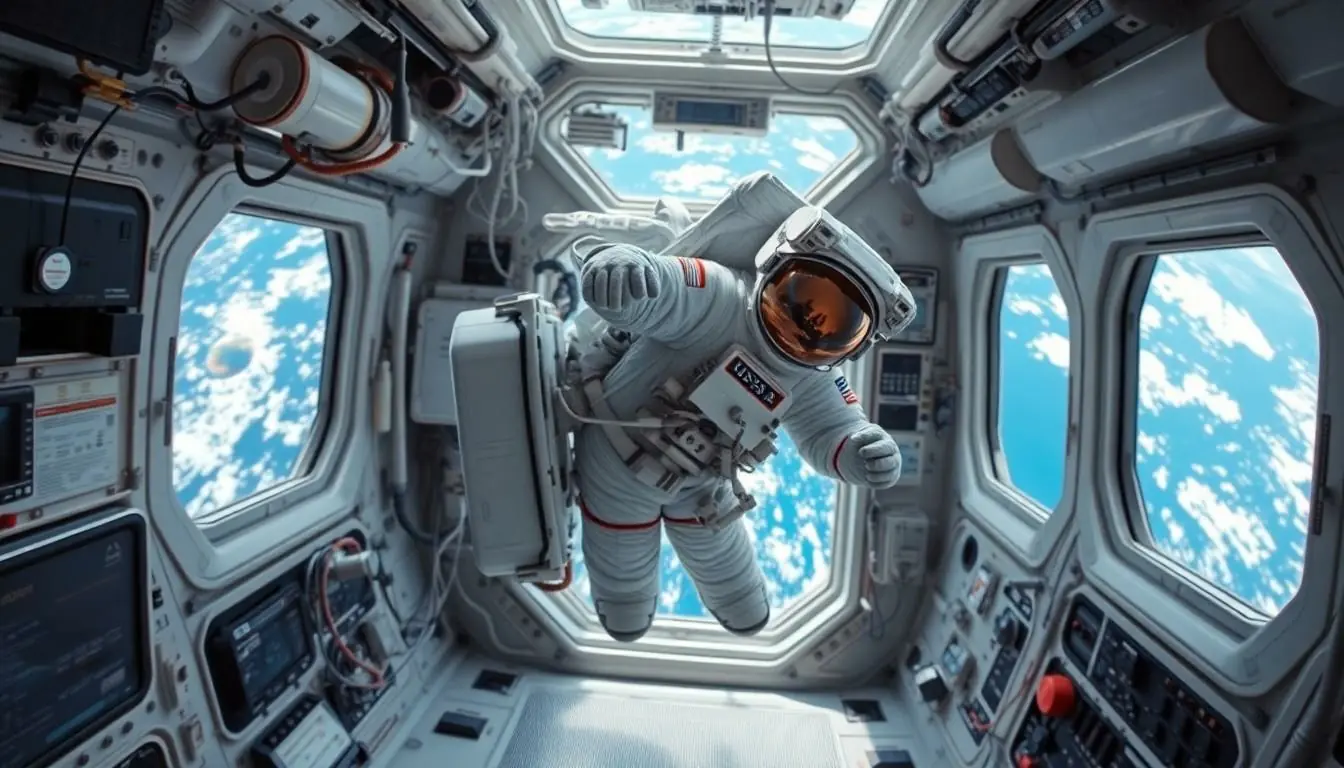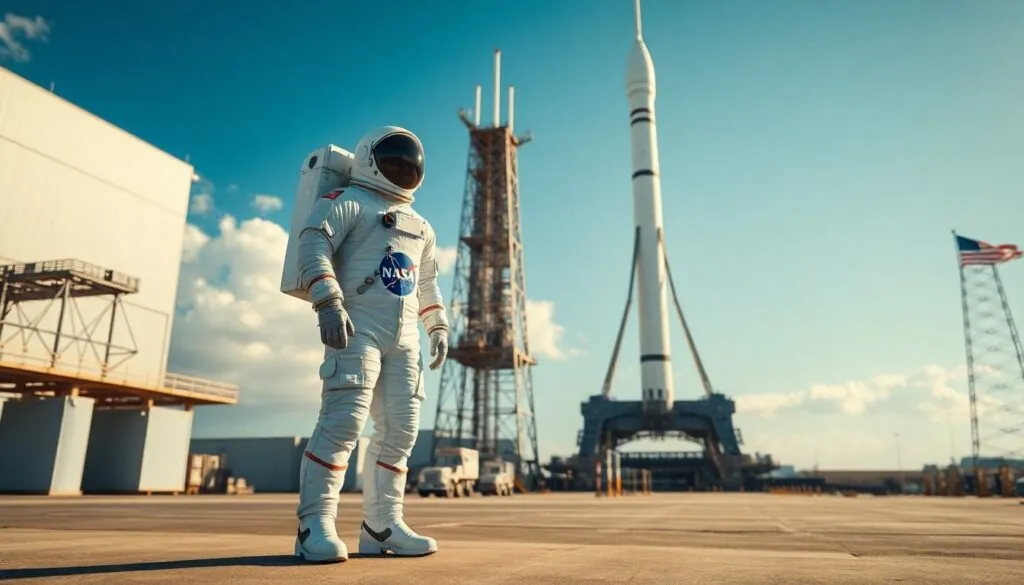Table of Contents
ToggleThe space race was more than just a competition; it was a cosmic showdown that sparked groundbreaking innovations. Picture this: two superpowers racing to conquer the final frontier, fueled by ambition and a dash of good ol’ rivalry. From rocket science to satellite technology, the inventions born from this exhilarating era changed life on Earth in ways no one could’ve imagined.
Overview of Space Race Technology
The space race prompted essential developments in various technologies. Rocket science underwent significant advancements during this rivalry. Satellites evolved quickly, leading to improved communication and weather forecasting. Innovations in materials science allowed for stronger and lighter spacecraft.
NASA and the Soviet space program played crucial roles in these advancements. They developed and implemented new propulsion systems. This improved performance and safety of space vehicles. Moreover, telemetry and computer technology saw rapid progression, enhancing mission control capabilities.
During this period, life-support systems became a priority. Engineers created advanced systems to ensure astronaut health and safety in space. Guidance and navigation systems also advanced to enable precise trajectories and successful landings.
The impact of these technologies reached beyond space exploration. Many of the materials and inventions found uses in various industries. Examples include Kevlar in protective gear and integrated circuits in consumer electronics.
Agriculture benefited from satellite technology too. Satellite imagery revolutionized farming practices by enabling precision agriculture. Communication satellites transformed the way people connect globally, leading to mobile phones and the internet.
In recognition of the importance of these advancements, many countries continue to invest in space exploration. Awareness of the far-reaching implications of space race technologies persists today. Current exploration missions rely heavily on these foundational advancements, solidifying their lasting legacy.
Key Innovations During the Space Race

The space race spurred crucial technological advancements that shaped modern society. Innovations emerged in various fields, leading to transformative changes in life on Earth.
Satellite Development
Communication satellites revolutionized information sharing, enabling global connectivity. Early satellites, such as Sputnik 1 launched in 1957, demonstrated the potential for space-based technology. Advancements in satellite systems facilitated weather forecasting, which improved disaster response and agricultural planning. Modern satellites enhance GPS technology, providing precise location data critical for navigation. Enhanced imaging capabilities also support environmental monitoring and natural resource management.
Propulsion Systems
Rocket propulsion systems saw significant advancements during this era, enabling human spaceflight and lunar exploration. The development of the F-1 rocket engine propelled the Saturn V, which successfully launched Apollo missions. Innovative technologies included the use of liquid propellants, which increased thrust and efficiency. Solid rocket boosters further enhanced launch capabilities by providing additional power. Enhanced propulsion allowed for more ambitious missions, paving the way for interplanetary exploration.
Life Support Systems
Life support systems became vital for ensuring astronaut safety and health in space. Innovations in environmental control provided breathable air and maintained temperature levels inside spacecraft. Water recovery systems enabled recycling, reducing the need for large water supplies. Effective waste management systems ensured cleanliness and hygiene for crews on long missions. Enhanced medical technologies also prepared astronauts for potential health emergencies while in space. Continuous improvements ensured that astronauts could spend extended periods away from Earth safely.
Impact on Modern Technology
The space race significantly influenced modern technology, leading to advancements that permeate daily life.
Influence on Communication
Satellite technology revolutionized communication. Communication satellites, starting with Sputnik 1 in 1957, enabled instant global interaction. As a result, they laid the groundwork for mobile phones and the internet. The ability to transmit data quickly transformed how people communicate and access information. Advances in signal processing and miniaturization further enhanced communication methods. Enhanced weather forecasting emerged from satellite data, enabling better disaster response. Thus, the impact of space race innovations continues to resonate in various communication sectors globally.
Advances in Materials Science
Materials science experienced a significant evolution during the space race. Innovations like Kevlar, initially developed for spacecraft, found applications in protective gear and armor. Space exploration demanded lightweight yet durable materials for spacecraft, which spurred research in composites. Consequently, industries adopted these materials in automotive and aerospace applications. Research on thermal protection systems also led to advancements in heat-resistant materials. Hence, the materials developed during the space race now play a crucial role in enhancing safety and performance across multiple industries.
Lasting Legacy of the Space Race
The space race led to revolutionary innovations that continue shaping modern technology. Communication satellites like Sputnik 1, launched in 1957, transformed information sharing and weather forecasting; these advancements improved disaster response and agricultural planning. Remarkable progress in rocket propulsion systems enabled human spaceflight and lunar exploration, highlighting innovations such as the F-1 rocket engine and solid rocket boosters.
Significant improvements in life support systems prioritized astronaut safety; advancements included enhanced environmental control, water recovery, waste management, and medical technology, allowing crews to remain in space for extended periods. Advancements in telemetry and computer technology heightened mission control capabilities, ensuring safe and efficient operations during missions.
Satellite technology drastically revolutionized global communication. Instant interaction became the norm, paving the way for mobile phones and the internet. Enhanced signal processing and miniaturization contributed to this evolution, making communication methods more effective.
Moreover, materials science experienced considerable growth during this time. Kevlar emerged from space race innovations, finding applications in protective gear and armor, while lightweight, durable materials originally developed for spacecraft have been adapted across multiple industries.
Countries today remain invested in space exploration as they recognize the ongoing implications of these technologies, which reinforce the lasting legacy of the space race. Each of these contributions reflects an enduring impact, influencing daily life in ways that were once unimaginable.
The legacy of space race technology is undeniable. It not only pushed the boundaries of human exploration but also laid the groundwork for modern advancements that permeate everyday life. Innovations in satellite communication and materials science continue to shape industries and enhance global connectivity.
As nations invest in new space initiatives, the spirit of competition and collaboration from the space race remains relevant. The technologies developed during this era serve as a powerful reminder of what can be achieved when ambition meets innovation. The impact of these advancements will continue to influence future generations, driving progress in ways that extend far beyond the stars.





